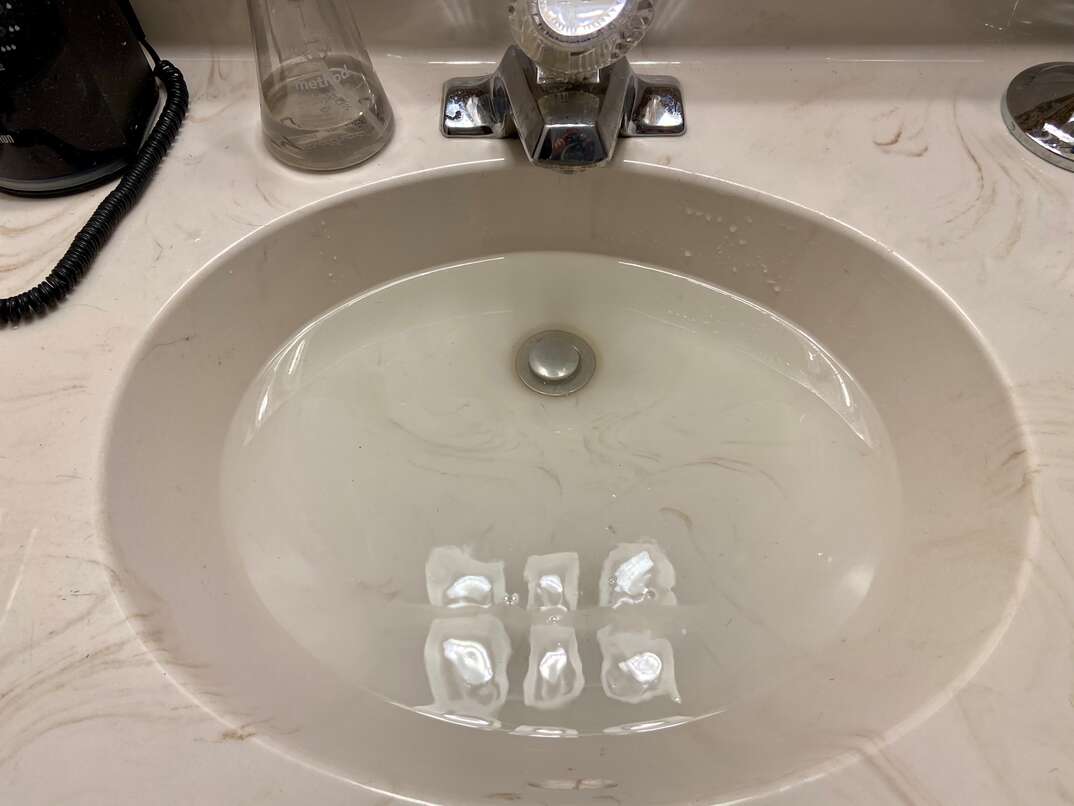- AppliancesElectriciansHVACLandscapingLocksmithPest ControlPlumbingRenovationRoofingT V RepairAll Home Improvement
- Car AccidentClass ActionCorporate LawCriminal DefenseDivorce LawEmployment LawFamily LawFinancial LawLegal AidMedical Injury LawyersMedical MalpracticeReal Estate LawWater Fire RestorationAll Legal
- InvestmentRetirementAll Finance
- Animal InsuranceAutoGeneral InsuranceHealth PolicyHome RentersAll Insurance
- DentalHealth SpecialistsAll Medical
- Animal CareVeterinaryAll Pets
- Auto GlassTowingAll Automotive
Why Is My Sink Gurgling?

In a very real sense, our houses "talk" to us. Clanging pipes, clicking baseboards, the woosh of central air vents and the whistle of wind beneath doorways can all provide information about the state of our home. Sometimes these sounds are just part of its normal operation, but other times, they can provide valuable information that something might be amiss.
So when your sink starts to gurgle, is that normal, or is it something that points to a problem that needs addressing? More than likely, the issue isn't serious, but it can still help to understand what might be causing it.
Is Sink Gurgling Normal?
In short, no. And if any drain in your house starts to make belching or gurgling noises, it's a sure sign that a blockage has formed — or is beginning to form — somewhere along the route the wastewater takes to get into your septic tank or sewer system. In fact, when a drain starts to make noise, you'll also probably notice that the water is draining more slowly than usual. There are several common areas where these blockages may occur and clues you can look for to help determine the issue.
If there is just one sink in your house that is gurgling, chances are that the blockage is somewhere between that drain and the place it connects to your main sewer line.
Working Out the Clogs
The best way to begin to work on this clog — which can be caused by an accumulation of grease, food particles, bathroom products or a combination of these things — would be with a simple plunger that could shake the particles loose. If that doesn't work, your next best bet is a high-quality plumbing snake. This is a tool that allows you to send a rigid wire down the drain to clear out any blockage it encounters. If you don't have a snake, or if your drain won't easily allow you to use one, then you might want to try a chemical solution.
It's best, however, to avoid using commercial drain cleaners, as they can corrode or damage pipes, especially in older homes. Instead, you can try an organic drain cleaner, or you can use dish soap, boiling water, baking soda and vinegar to try to dissolve the clog.
Kitchen Cupboard Solution
To do so, squirt some grease-fighting dish soap down the drain and follow it with boiling water. Then, pour about one cup of baking soda down the drain, followed by one cup of distilled white vinegar. These two compounds will start to fizz, so don't be surprised if you start to hear even more gurgling sounds coming from your drain. Wait about five minutes after the fizzing stops, then pour two more cups of boiling water down the drain.
If that doesn't do the trick, you can try it again. Or you can pour a cup of baking soda followed by 1/2 cup of salt into the drain and let it sit overnight before flushing with more hot water in the morning.
P-Trap
A common place for clogs to occur is in your sink's P-trap, the piece of pipe beneath the sink that looks like a "U-turn." If the P-trap wasn't installed properly when the sink was first put in, it can be an additional contributor to gurgling.
The P-trap can be a relatively easy part to remove as long as it wasn't glued in place. The process usually consists of unscrewing two attachments and wiggling the trap off (have a bucket on hand to catch any water left in the line). If the chemical methods above don't work, manually removing and cleaning the P-trap might solve the problem. If the trap is too hard to remove, or you're not comfortable tackling plumbing projects, it would be best to call a professional.
Vent Pipe
If you notice that several drains in your home are running slowly or making gurgling noises, the problem is likely a blockage somewhere along your main sewer line or a blockage in the vent pipe. If it's the former, it's a problem best handled by a professional plumber. If you suspect it might be your vent pipe, you can attempt to fix the problem yourself if you're comfortable getting on the roof.
Your plumbing vent pipe allows air into your plumbing system so that water can flow more easily. Think about trying to quickly empty a large bottle of soda by upending it versus trying to empty it while letting a bit of air in; the air encourages the smooth movement of water by breaking the vacuum that forms without it.
The vent pipe also allows foul odors to escape the system rather than coming back up through your drain. Sometimes the opening of the pipe can get clogged with leaves or other debris, which you can attempt to clear out by hand by locating the pipe's opening above your roofline and removing the obstruction. If you're not comfortable getting on your home's roof, this is a good time to call in a pro.
Elocal Editorial Content is for educational and entertainment purposes only. Editorial Content should not be used as a substitute for advice from a licensed professional in your state reviewing your issue. Systems, equipment, issues and circumstances vary. Follow the manufacturer's safety precautions. The opinions, beliefs and viewpoints expressed by the eLocal Editorial Team and other third-party content providers do not necessarily reflect the opinions, beliefs and viewpoints of eLocal or its affiliate companies. Use of the Blog is subject to the
Website Terms and Conditions.The eLocal Editorial Team operates independently of eLocal USA's marketing and sales decisions.

